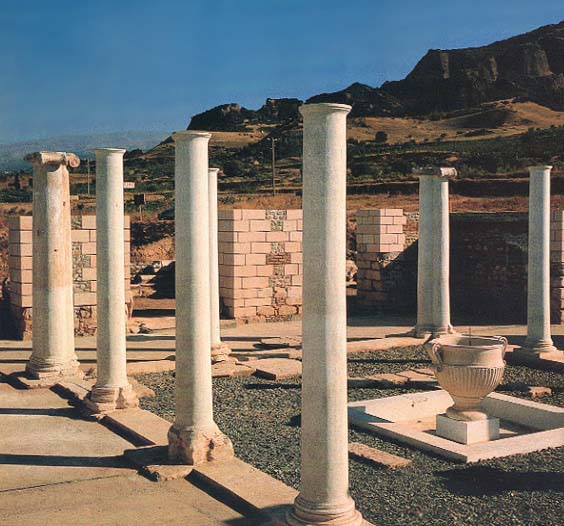Image Details

Sonia Halliday
Sardis, the capital of ancient Lydia, may have provided a home for Diaspora Jews from the Persian period until the city’s destruction in the seventh century A.D.—a span of more than 1,000 years. At its height under the Romans in the first two centuries A.D., Sardis may have boasted a population of more than 100,000.
Though Jews were important and valued members of the largely pagan city, archaeologists have unearthed nothing, assert the authors, to suggest that a group of gentile “sympathizers” of Judaism called “God-fearers” took part in synagogue activities or that the Sardis Jews were influenced by Christianity.
The Sardis synagogue (see plan) was oriented on a rough east-west axis and comprised two rooms; a peristyle forecourt, seen at left, and a long rectangular assembly hall (not visible). An apse lined with semicircular benches was carved into the hall’s western wall opposite the entrance from the forecourt.
The synagogue was not a separate structure but was part of a monumental Roman bath-gymnasium complex located on Sardis’s main square.
